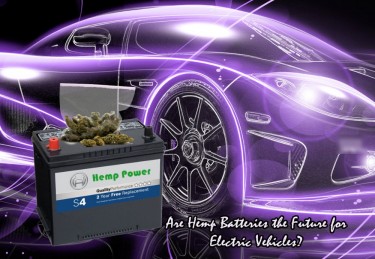
The history of human use and consumption of hemp is long and colorful.
As early as 2800 BCE, ancient Chinese were already using hemp to manufacture textiles, durable fabrics, and fibers which were used for fishing nets, ropes, and clothing. It was also used for European sailcloth, paper, food, medicine, and so much more. Unfortunately, along with modern economies and the advancement of technology, we began using hemp far less.
However, politics is one of the biggest reasons why. The Marijuana Tax Act of 1937 and the Controlled Substances Act of 1970, specifically, as well as the War on Drugs, promoted negative associations with marijuana. Even its non-psychoactive cousin, hemp, was affected.
That said, we’re seeing a rise again in the popularity of hemp. People are now rediscovering an underrated material that was once highly prized for its durability – plus, it’s so much more environmentally-friendly compared to cotton and other synthetic fabrics like nylon. We’re now seeing incredible modern uses of hemp such as hempcrete, hemp plastic, biofuel, nanomaterials, insulation, and even batteries.
Now, even the legendary German car brand, Volkswagen, is seeing the value of using hemp.
Partnership With Revoltech GmbH
Volkswagen announced in a press release that they had just engaged into a partnership with Revoltech GmbH, a German start-up that manufactures sustainable and high-quality textiles that is entirely created with hemp residue. Since the products are made from by-products, it’s easy on the environment and can even be recycled again after it’s reached the end of its life cycle.
This fabric will be going into Volkswagen vehicles as a replacement for faux leather. Compared to faux leather, hemp byproducts contain a high cellulose level which makes it stronger while retaining a light weight. However, Volkswagen isn’t the first car brand to do so: Back in 1941, Henry Ford famously built a vehicle entirely out of plastic derived from hemp, as well as other plant material. The vehicle, Model T, was comprised of bioplastic made from hemp, wheat, flax, and even spruce pulp. As a result, this innovative vehicle was even lighter than fiberglass yet was 10 times stronger than steel!
Thanks to the new partnership between Volkswagen and Revoltech GmbH, we can look forward to revolutionary materials instead of faux leather in future vehicle models. They are working on all-natural material known as LOVR™ (leather-free, oil-free, vegan and residue-based) which will serve as a surface material created specifically for use in automobiles.
The hemp will be sourced from hemp fields around the region, and it’s entirely composable and recyclable too.
“In our search for new materials, we are very open to new ideas from many different industries. At Technical Development, we place a strong focus on innovative, creative and sustainable solutions for holistic, resource-saving vehicle development,” said Kai Grünitz, Volkswagen Brand Board Member for Technical Development.
We won’t be seeing the LOVR™ fabrics in Volkswagen’s cars until 2028. Until then, the companies will be working tirelessly on developing this incredible material.
Other Uses Of Hemp For Vehicles
More vehicle companies than ever are seeking out sustainable options for businesses and operations – and the automobile industry is one of them. Volkswagen isn’t one of the first, as you’ll read on later below.
In addition, both big and small companies are seeing the potential of hemp replacing plastic and other unsustainable materials previously used in operations. While Henry Ford had a vision that his bioplastic car would end up being much lighter, safer, and more affordable than other vehicles, World War II forced vehicle production to shut down abruptly. Unfortunately, Ford’s dreams of developing sustainable cars from bioplastics were never achieved but his dream is potentially being revisited in different iterations today.
Hemp-Reinforced Polypropylene
Aside from using hemp in place of faux leather, hemp fibers can also be used as a replacement for talc in car plastics. It’s used in a number of car parts such as drink holders, bumpers, panels, door trims, and much more. Heartland Industries has successfully produced hemp-reinforced polypropylene using plastic compounds that make it simpler for car companies to integrate it with existing products.
It’s good to note that hemp weighs approximately 80% lighter compared to calcium carbonate, glass fiber, and talc. As a result, using hemp-reinforced polypropylene can weigh as much as 60% less!
Luxury Brands Already Use Hemp
Many of the biggest luxury names in the car industry have already adopted hemp-based materials in their vehicles. Back in 2013, BMW began using hemp in their revolutionary electric car, the BMW i3. Hemp was designed into the car’s interior panels, which saved the car 350 kilograms.
Meanwhile, recently, Porsche unveiled their 718 Cayman GT4 Clubsport, a sustainable race car with an impressive array of hemp-based features. They used hemp instead of traditional carbon fibers for their car doors, which is considered a bold move for Porsche or the industry as a whole. It’s good to note that hemp is also famous for its insulating properties, which contributes to overall comfort when riding in vehicles. Passengers can expect quieter, smoother rides without energy-consuming cooling or heating systems that most cars today are reliant on.
Conclusion
When it comes to the potential of hemp for the automobile industry, we’re only in the beginning. We can expect to see a large number of revolutionary developments in the near future, using hemp and hemp-based composites not just in automobile manufacture but even in fuel. There are many exciting developments for hemp in this field!
MORE ON HEMP CARS AND CAR PARTS, READ ON…

ARE HEMP BATTERIES THE FUTURE OF ELECTRIC CARS?


 Cannabis News1 year ago
Cannabis News1 year ago
 One-Hit Wonders1 year ago
One-Hit Wonders1 year ago
 Cannabis 1012 years ago
Cannabis 1012 years ago
 drug testing9 months ago
drug testing9 months ago
 Education2 years ago
Education2 years ago
 Marijuana Business Daily1 year ago
Marijuana Business Daily1 year ago
 Cannabis1 year ago
Cannabis1 year ago
 California2 years ago
California2 years ago

























